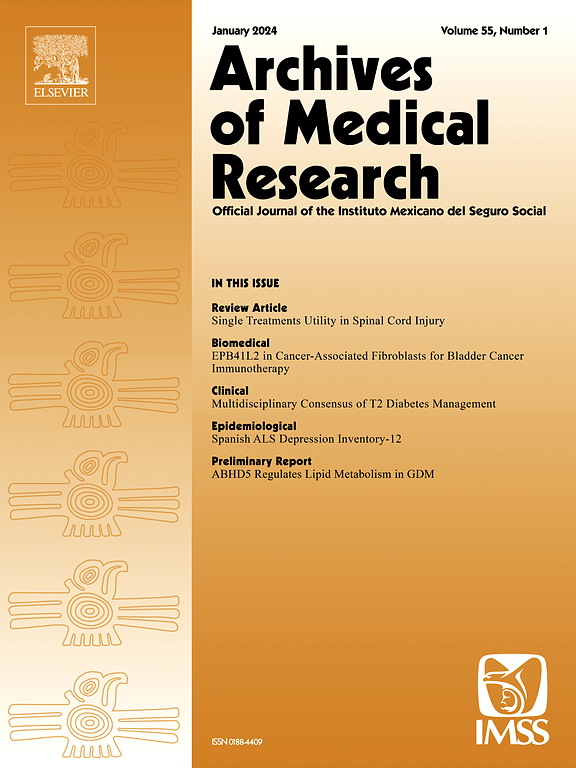Evaluation of Multimorbidity Burden in Frailty Transitions in Costa Rican Older Adults Using Multistate Markov Models
IF 3.4
3区 医学
Q1 MEDICINE, RESEARCH & EXPERIMENTAL
引用次数: 0
Abstract
Background and Aims
The accumulation of non-communicable chronic diseases is recognized to play a crucial role in the deterioration of health in older adults, partly because it may impact frailty states. This study assessed the influence of multimorbidity on the phenotype transitions in frailty over time and frailty-related mortality risk.
Methods
Data from the Costa Rican Longevity and Healthy Aging Study Cohort (2005–2010) was used. A total of 2660 individuals aged 60 and above were included. Multimorbidity was defined as having three or more non-communicable diseases from 13 chronic conditions. Fried criteria were employed to assess frailty states (robust, pre-frail, frail). Markov-based multistate models were used to examine the impact of multimorbidity on frailty transitions and mortality over 5 years.
Results
Multimorbidity accelerates the transition to frailty. Compared to those with fewer than three non-communicable diseases, individuals with both multimorbidity and a prefrail state had a lower chance of recovering to robustness (HR:0.73 [95% CI: 0.54–0.99]), and a higher risk of becoming frail (HR:1.83 [95% CI: 1.43–2.34]). This translates into a 30-month earlier onset of frailty compared to individuals without chronic diseases. Multimorbidity increased the risk of all-cause mortality in those who were pre-frail (HR:1.83 [95% CI: 1.43–2.34]) but did not affect mortality risk in those who were already frail (HR:0.88 [95% CI: 0.62–1.23]).
Conclusions
Multimorbidity is a predictor for dynamic transitions to frailty or death. It favors the transition to “Frailty” more than to death and impacts mortality mostly in people with a “Pre-frail” state, encouraging them to explore opportunities for intervention.
使用多状态马尔可夫模型评估哥斯达黎加老年人衰弱过渡中的多重疾病负担
背景和目的非传染性慢性疾病的积累被认为在老年人健康恶化中起着至关重要的作用,部分原因是它可能影响虚弱状态。本研究评估了多病对衰弱表型转变的影响,以及衰弱相关的死亡风险。方法采用哥斯达黎加长寿与健康老龄化研究队列(2005-2010)的数据。调查共包括2660名60岁及以上人士。多病定义为患有13种慢性病中的3种或3种以上非传染性疾病。采用油炸标准来评估虚弱状态(健壮,虚弱前,虚弱)。使用基于马尔可夫的多状态模型来检查5年多发病对衰弱转变和死亡率的影响。结果慢性疾病加速了向衰弱的过渡。与患有少于三种非传染性疾病的人相比,同时患有多种疾病和体弱多病的人恢复强健的机会较低(相对危险度:0.73 [95% CI: 0.54-0.99]),而体弱多病的风险较高(相对危险度:1.83 [95% CI: 1.43-2.34])。与没有慢性疾病的人相比,这意味着身体虚弱的发病时间提前了30个月。多病增加了体弱前患者的全因死亡率(HR:1.83 [95% CI: 1.43-2.34]),但不影响体弱患者的死亡率(HR:0.88 [95% CI: 0.62-1.23])。结论多重发病率是动态过渡到虚弱或死亡的预测因子。它更倾向于向“虚弱”过渡,而不是向死亡过渡,对死亡率的影响主要发生在“虚弱前”状态的人身上,鼓励他们探索干预的机会。
本文章由计算机程序翻译,如有差异,请以英文原文为准。
求助全文
约1分钟内获得全文
求助全文
来源期刊

Archives of Medical Research
医学-医学:研究与实验
CiteScore
12.50
自引率
0.00%
发文量
84
审稿时长
28 days
期刊介绍:
Archives of Medical Research serves as a platform for publishing original peer-reviewed medical research, aiming to bridge gaps created by medical specialization. The journal covers three main categories - biomedical, clinical, and epidemiological contributions, along with review articles and preliminary communications. With an international scope, it presents the study of diseases from diverse perspectives, offering the medical community original investigations ranging from molecular biology to clinical epidemiology in a single publication.
 求助内容:
求助内容: 应助结果提醒方式:
应助结果提醒方式:


